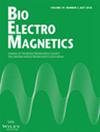Charilaos Tyrakis, Kiki Theodorou, Yiannis Kiouvrekis, Aris Alexias, Constantin Kappas
求助PDF
{"title":"希腊的射频暴露水平","authors":"Charilaos Tyrakis, Kiki Theodorou, Yiannis Kiouvrekis, Aris Alexias, Constantin Kappas","doi":"10.1002/bem.22434","DOIUrl":null,"url":null,"abstract":"<p>Medical Physics Department (Medical School, University of Thessaly) participated in a Greek National EMF research program (EDBM34) with the scope to measure and evaluate radiofrequency (RF) exposure (27–3000 MHz) in areas of sensitive land use. A thousand (1000) measurements were carried out at two “metropolitan locations” (Athens and Thessaloniki: 624 points) and several rest urban/rural locations (376 points). SRM 3006 spectrum analyzer manufactured by Narda Safety Test Solutions was used. The broadband mean electric field in metropolitan areas was 0.41 V/m, while in the rest of Greece was 0.36 V/m. In metropolitan areas, the predominant RF source was the TV and Radio FM signals (36.2% mean contribution to the total RF exposure level). In the rest areas, the predominant source was the systems of the meteorological and military/defensive service (31.1%). The mobile sector contributed 14.9% in metropolitan areas versus 12.2% in the rest of Greece. The predominant mobile source was 900 MHz in both cases (4.5% in metropolitan areas vs. 3.3% in the rest of Greece). The total exposure from all RF sources complied with the International Commission on Non-Ionizing Radiation Protection (ICNIRP) 2020 safety guidelines [ICNIRP, 2020]. The maximum exposure level was 0.129% of the limit for the metropolitan areas vs. 0.110% for the rest of Greece. Nonremarkable differences between metropolitan areas' exposure and the rest of Greece. In most cases, new 5 G antennas will be added to the existing base stations. Thus, the total exposure may be increased, leading to higher safety distances. © 2023 Bioelectromagnetics Society.</p>","PeriodicalId":8956,"journal":{"name":"Bioelectromagnetics","volume":"44 1-2","pages":"17-25"},"PeriodicalIF":1.2000,"publicationDate":"2023-02-14","publicationTypes":"Journal Article","fieldsOfStudy":null,"isOpenAccess":false,"openAccessPdf":"","citationCount":"0","resultStr":"{\"title\":\"Radiofrequency Exposure Levels in Greece\",\"authors\":\"Charilaos Tyrakis, Kiki Theodorou, Yiannis Kiouvrekis, Aris Alexias, Constantin Kappas\",\"doi\":\"10.1002/bem.22434\",\"DOIUrl\":null,\"url\":null,\"abstract\":\"<p>Medical Physics Department (Medical School, University of Thessaly) participated in a Greek National EMF research program (EDBM34) with the scope to measure and evaluate radiofrequency (RF) exposure (27–3000 MHz) in areas of sensitive land use. A thousand (1000) measurements were carried out at two “metropolitan locations” (Athens and Thessaloniki: 624 points) and several rest urban/rural locations (376 points). SRM 3006 spectrum analyzer manufactured by Narda Safety Test Solutions was used. The broadband mean electric field in metropolitan areas was 0.41 V/m, while in the rest of Greece was 0.36 V/m. In metropolitan areas, the predominant RF source was the TV and Radio FM signals (36.2% mean contribution to the total RF exposure level). In the rest areas, the predominant source was the systems of the meteorological and military/defensive service (31.1%). The mobile sector contributed 14.9% in metropolitan areas versus 12.2% in the rest of Greece. The predominant mobile source was 900 MHz in both cases (4.5% in metropolitan areas vs. 3.3% in the rest of Greece). The total exposure from all RF sources complied with the International Commission on Non-Ionizing Radiation Protection (ICNIRP) 2020 safety guidelines [ICNIRP, 2020]. The maximum exposure level was 0.129% of the limit for the metropolitan areas vs. 0.110% for the rest of Greece. Nonremarkable differences between metropolitan areas' exposure and the rest of Greece. In most cases, new 5 G antennas will be added to the existing base stations. Thus, the total exposure may be increased, leading to higher safety distances. © 2023 Bioelectromagnetics Society.</p>\",\"PeriodicalId\":8956,\"journal\":{\"name\":\"Bioelectromagnetics\",\"volume\":\"44 1-2\",\"pages\":\"17-25\"},\"PeriodicalIF\":1.2000,\"publicationDate\":\"2023-02-14\",\"publicationTypes\":\"Journal Article\",\"fieldsOfStudy\":null,\"isOpenAccess\":false,\"openAccessPdf\":\"\",\"citationCount\":\"0\",\"resultStr\":null,\"platform\":\"Semanticscholar\",\"paperid\":null,\"PeriodicalName\":\"Bioelectromagnetics\",\"FirstCategoryId\":\"99\",\"ListUrlMain\":\"https://onlinelibrary.wiley.com/doi/10.1002/bem.22434\",\"RegionNum\":3,\"RegionCategory\":\"生物学\",\"ArticlePicture\":[],\"TitleCN\":null,\"AbstractTextCN\":null,\"PMCID\":null,\"EPubDate\":\"\",\"PubModel\":\"\",\"JCR\":\"Q3\",\"JCRName\":\"BIOLOGY\",\"Score\":null,\"Total\":0}","platform":"Semanticscholar","paperid":null,"PeriodicalName":"Bioelectromagnetics","FirstCategoryId":"99","ListUrlMain":"https://onlinelibrary.wiley.com/doi/10.1002/bem.22434","RegionNum":3,"RegionCategory":"生物学","ArticlePicture":[],"TitleCN":null,"AbstractTextCN":null,"PMCID":null,"EPubDate":"","PubModel":"","JCR":"Q3","JCRName":"BIOLOGY","Score":null,"Total":0}
引用次数: 0
引用
批量引用

 求助内容:
求助内容: 应助结果提醒方式:
应助结果提醒方式:


